Honiara is the capital of the Solomon Islands. The city is known for its bustling markets, vibrant culture, and prosperous World War II history.
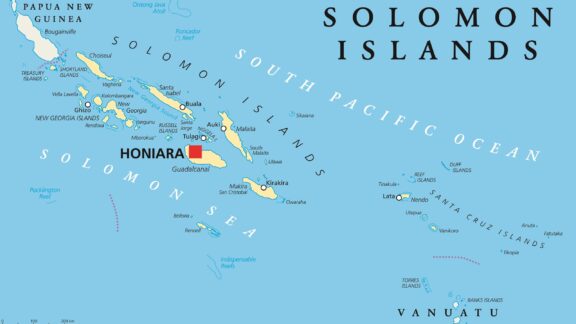
Honiara serves as the political and economic hub of the nation, and it’s the largest city in the Solomon Islands. It’s a multi-faceted urban center characterized by its historical significance, natural beauty, cultural diversity, and the promise of continued growth and improvement.
Where is Honiara?
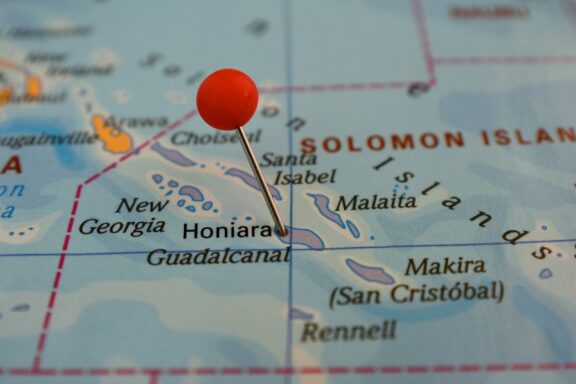
Honiara is located on the northwest shore of Guadalcanal Island, a component of the Solomon Islands chain in the South Pacific. It occupies a southeastern position within national boundaries and is a crucial hub for local and overseas travel.
Topographically, the city is situated near where the Mataniko River meets the ocean, originating from the interior hills. Its coordinates are roughly 9.43° S latitude and 159.95° E longitude.
Relative to other nations, the Solomon Islands are east of Papua New Guinea and northeast of Australia, giving the city regional importance. It is an important center for both Guadalcanal Island and the Solomon Islands.
History of Honiara
Honiara’s location was primarily rural in the pre-World War II period. Indigenous communities engaged in subsistence farming and fishing, with minimal contact with external entities. The area was rich in natural resources but had yet to attract major attention from colonial powers or commercial interests.
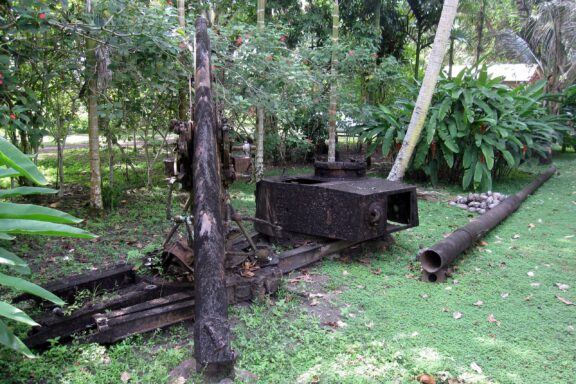
The Battle of Guadalcanal during the war became a turning point in the Pacific campaign. Both Japanese and American forces understood the strategic importance of the island.
As a result, the area saw the construction of airstrips, military bases, and supply depots. The war profoundly impacted the local population and significantly changed the region’s physical and social landscape.
In the aftermath of World War II, the island was left with infrastructural developments, including airfields and roads, that would form the backbone for future urban growth.
Honiara was officially designated as the new capital in 1952, primarily due to its strategic location and the existing infrastructure. Administration, governance, and trade started to centralize here.
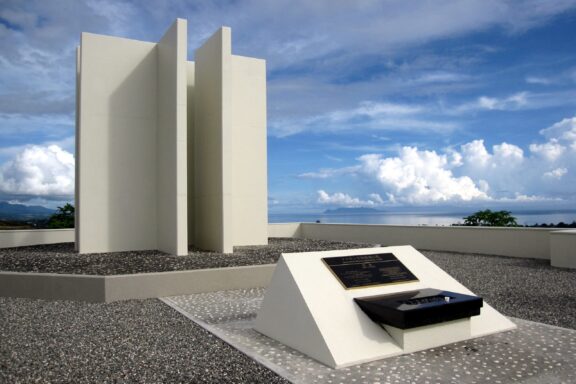
From the 1960s onward, Honiara expanded due to growing commercial activities and governmental functions. Educational institutions and healthcare facilities were established to serve the growing population.
However, ethnic tensions, particularly between residents from different islands, led to the civil unrest that marred the late 1990s and early 2000s. This period was fraught with instability, affecting economic development and social cohesion.
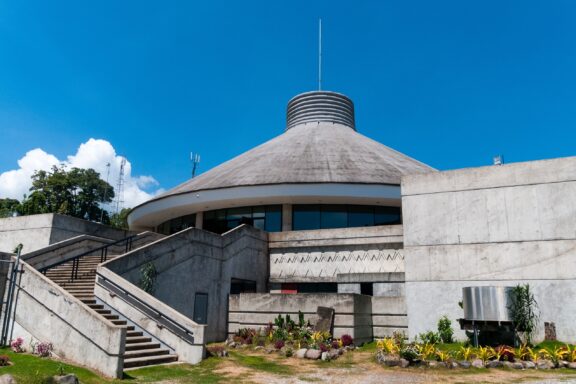
In the new millennium, efforts have been made to revitalize the city and address previous challenges. Investments in infrastructure, including roads and public services, have improved the quality of life for residents.
Initiatives have also promoted social harmony and economic resilience despite unemployment and governance issues.
Features of Honiara
Honiara is a fascinating mix of history and modernity, where markets such as the Central Market offer a vibrant tapestry of colors and scents, showcasing the cultural diversity of the Solomon Islands.
The city’s strategic role during World War II is still evident. Monuments and museums, including the American and Allied memorials, are enduring symbols of the city’s rich past.
Geography and Climate
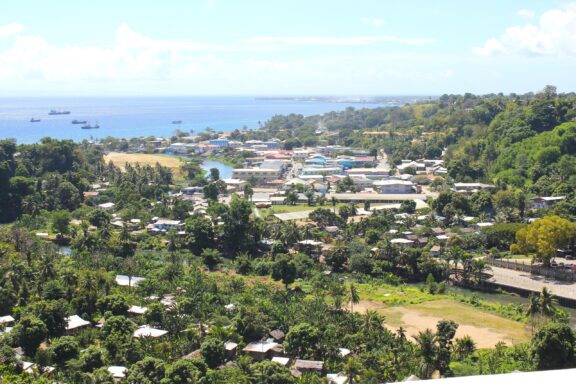
A mix of coastal plains and hilly interiors marks the terrain surrounding the city. The presence of the Mataniko River adds a riparian element to the geography.
The city experiences a tropical rainforest climate, with high humidity levels throughout the year. Rainfall is abundant and can occur any month, although there is a drier period from May to November. Average temperatures hover around 26-27 °C (79-81 °F), warming it year-round.
Population
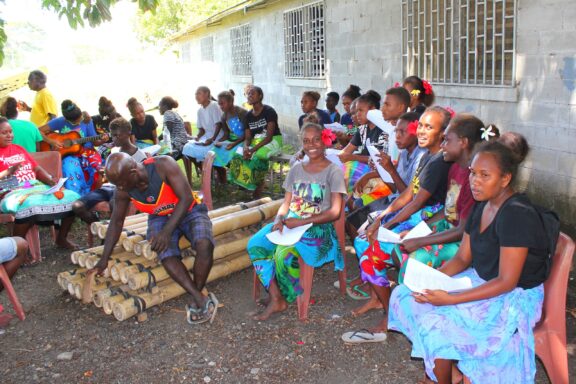
The city is the most populous in the Solomon Islands, with an ethnically diverse population. Most residents are of Melanesian descent, but there are also communities of Polynesians, Micronesians, and small numbers of Chinese and Europeans.
English is the official language, but Solomon Islands Pidgin is widely spoken. The city is often considered a melting pot, as it draws people from various islands in the archipelago seeking employment and education opportunities.
Economy
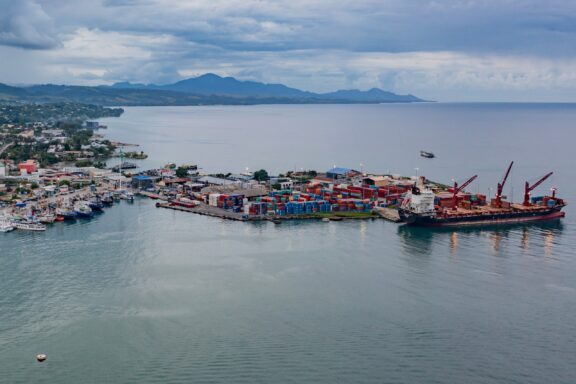
The city serves as the economic heart of the Solomon Islands. It is a hub for governmental services, providing a stable employment source for many residents.
Trade is another important sector, with the city as a critical entry and exit point for goods entering and leaving the country. Fishing and agriculture are also significant, as they cater to local needs and are part of the export market.
Tourism is an emerging industry, encouraged by the city’s historical landmarks and natural beauty. However, unemployment and underdevelopment persist, reflecting the broader economic issues facing the Solomon Islands.
Things to Do and Places to See in Honiara
An array of activities and sightseeing opportunities are available in Honiara. Let’s delve into some of the city’s standout attractions and experiences.
1. Central Market
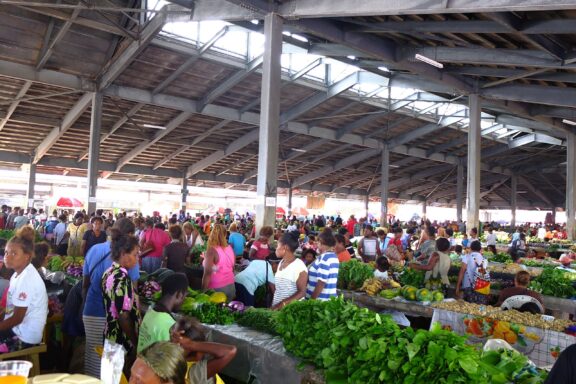
The Central Market in Honiara is more than a shopping venue; it’s a lively gathering place where the community comes together. The market offers a snapshot of Solomon Islands life, from vibrant fruits and vegetables to locally-made crafts.
The market is ideal for tourists seeking an authentic local experience. It’s a place to engage with the community, sample local foods, and purchase unique souvenirs. The market is also an excellent opportunity for photography, capturing the essence of daily life in the Solomon Islands.
2. Solomon Islands National Museum
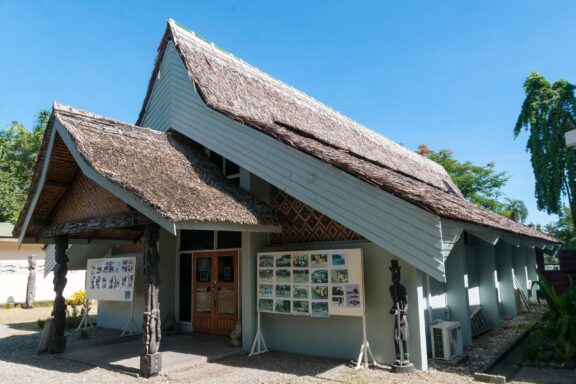
The Solomon Islands National Museum is a custodian of the nation’s cultural legacy, offering a multifaceted look into its rich and diverse heritage. The museum complex houses several galleries, each devoted to a different aspect of Solomon Islands culture.
This is a must-visit for anyone interested in understanding the cultural fabric of the Solomon Islands. Whether it’s learning about indigenous crafts or the evolution of island communities, the museum offers a well-rounded understanding that goes beyond the surface.
3. Mbonege Beach
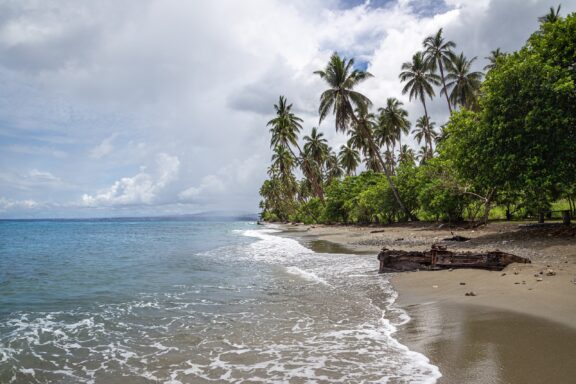
Mbonege Beach is a tranquil getaway offering more than just picturesque views. With its sandy shores and azure waters, it has something for everyone.
If you want to escape the hustle and bustle, Mbonege Beach is the perfect spot for relaxation and recreation. The water activities also make it a good choice for more adventurous visitors.
4. Guadalcanal American Memorial
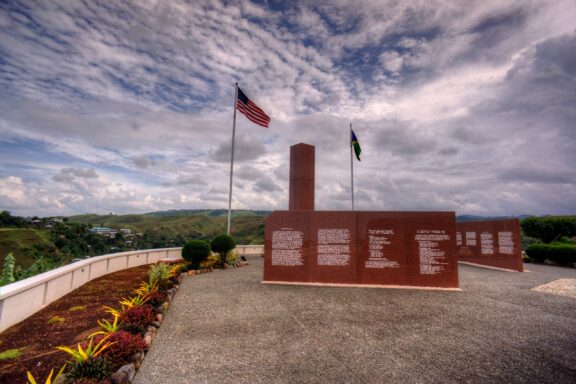
Standing on Skyline Ridge, the Guadalcanal American Memorial offers a moment of reflection and pays homage to those who fought for freedom during the Second World War. Elevated from its surroundings, the memorial provides panoramic views of Honiara and the Pacific Ocean.
Sculpted pillars and inscriptions recount the timeline of significant events, battles, and military and civilian life sacrifices. It’s not just a place for Americans to remember; it’s a site where visitors worldwide can appreciate the gravity of war and the cost of freedom.
5. Holy Cross Cathedral
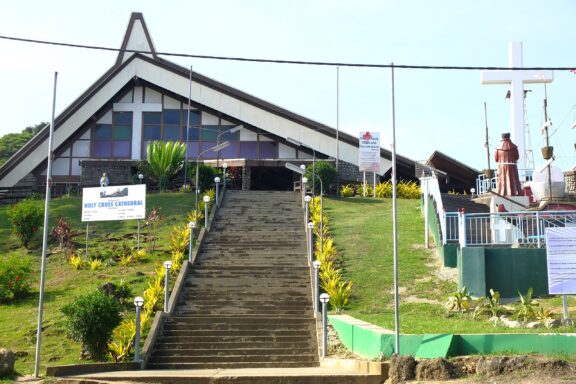
The Holy Cross Cathedral impresses with its architectural splendor, featuring intricate designs, beautiful stained glass, and a spacious interior conducive to peaceful prayer. The surrounding gardens offer a quiet escape for meditation or leisurely walks.
Whether you’re religious or simply appreciating architectural beauty, the Holy Cross Cathedral offers a serene space for spiritual or aesthetic exploration. Frequent masses and community events also provide a glimpse into the local faith practices.
6. Mataniko Falls
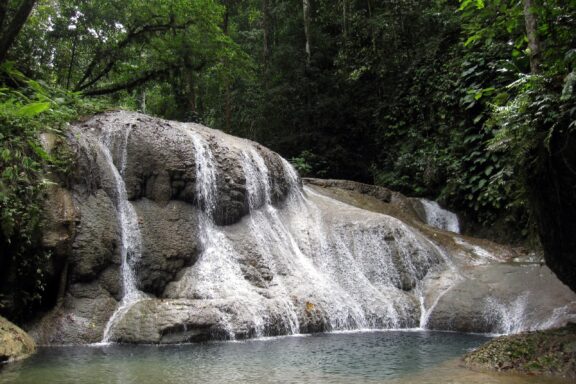
Mataniko Falls is a captivating natural site nestled in the lush forests of Guadalcanal, offering adventure and serenity in equal measure. A hiking trail leads you through dense vegetation to the falls, which cascade into a natural pool.
The sound of rushing water is complemented by the calls of local wildlife, making for an immersive natural experience. If you’re an adventure enthusiast or nature lover, Mataniko Falls is a must-visit. The trek is challenging but rewarding, and the swimming opportunity at the base of the falls is invigorating.
7. Tenaru Falls
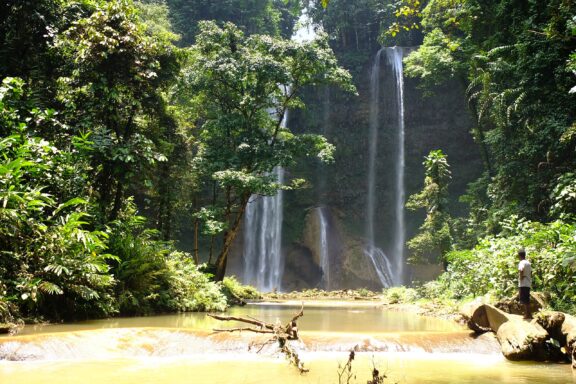
Hidden within the dense jungles of Guadalcanal, Tenaru Falls offers an awe-inspiring natural spectacle that’s a trekker’s reward at the end of a challenging journey. A hiking trail filled with natural obstacles leads you to this towering waterfall.
Tenaru Falls provides an ideal adventure for hiking enthusiasts and those looking to capture stunning photography. The isolation of the falls also makes it a perfect spot for those seeking tranquility and a connection with nature.
Frequently Asked Questions
When is the best time to visit Honiara?
The optimal period for visiting Honiara is during the dry season, which runs from May through November.
Is Honiara safe for tourists?
While the city is mostly peaceful, caution is advised during times of political events like elections and parliamentary sessions. Roads are in poor condition, and medical facilities are limited, especially outside the city.
What kind of food can I expect in Honiara?
Influenced by Melanesian culture, the traditional cuisine in the city heavily relies on locally sourced ingredients like root vegetables, fish, and coconuts.
The arrival of traders and colonizers added elements like rice and spices, creating a unique blend of flavors. The city’s coastal location makes seafood a staple, while its diverse population has led to various dishes that reflect multiple culinary traditions.
What are must-try dishes in Honiara to experience authentic local cuisine?
Sampling the local dishes in Honiara provides a genuine culinary experience that will leave a lasting impression. Here are some of the must-try dishes:
1. Fish Curry: A delightful blend of local spices and fresh fish.
2. Cassava Pudding: It’s a sweet treat made from grated cassava and coconut milk.
3. Poi: A root vegetable dish made from taro and coconut milk.
4. Tulagi Sashimi: Thinly sliced, fresh local fish, usually served with soy sauce and wasabi.
Are there any local customs or etiquettes to be aware of in Honiara?
Respecting local traditions and elders is valued. Dressing modestly is suggested, and it’s courteous to ask for consent before taking photographs of people and their belongings.
Is Honiara a family-friendly destination?
Yes, the city has various activities families can enjoy, such as visiting beaches and cultural museums.
How do I get from the airport to the city center in Honiara?
Taxis and buses serve as standard methods of transport from the airport to downtown Honiara.
Are there crocodiles in Honiara?
Crocodiles can be found in waterways and rivers near the city, although they are not typically in highly populated areas.
Can You Swim in the Honiara?
Swimming is possible, especially in designated beach areas. However, it’s advised to be cautious due to the potential presence of crocodiles in some waterways and to always adhere to local safety guidelines.
Are credit cards widely accepted in Honiara?
Credit cards are accepted in larger hotels and some dining establishments, but carrying cash for smaller vendors is a good idea.
Final Thoughts
While Honiara has challenges, such as limited medical facilities and occasional political unrest, the city provides a range of experiences that can be both enlightening and enjoyable.
From its war memorials and museums to its beautiful beaches and outdoor activities, Honiara has something for everyone. Whether you’re an adventurer, a history buff, or someone looking to immerse yourself in a different culture, you’ll find the city well worth visiting.
Image Sources and Copyright Information
- Map of Solomon Islands: © Peter Hermes Furian/Shutterstock
- Location Pin on Honiara, Solomon Islands Map: © JoaoCachapa/Shutterstock
- World War II Artillery in Jungle Setting: © Stefan Krasowski/Flickr
- Japanese War Memorial Monument Against Cloudy Sky: © Stefan Krasowski/Flickr
- Parliament House in Honiara under Blue Sky: © Graeme Snow/Shutterstock
- Tropical Coastal Town Landscape: © Wayne Via/Shutterstock
- Group of People Sitting Outdoors in Honiara: © Wayne Via/Shutterstock
- Aerial View of Honiara Port with Cargo Ships: © Gilmore Tana/Shutterstock
- Bustling Market Scene with Vendors and Shoppers: © Robert Szymanski/Shutterstock
- Exterior View of the Solomon Islands National Museum: © Graeme Snow/Shutterstock
- Tropical Beach with Palm Trees: © Sam Lawrence Photography/Shutterstock
- Guadalcanal American Memorial under Cloudy Sky: © Alex Ruan/Shutterstock
- Cathedral with Stairs and Cross: © Robert Szymanski/Shutterstock
- Tropical Waterfall in Lush Forest: © Stefan Krasowski/Flickr
- Tropical Waterfall in Lush Forest: © Robert Szymanski/Shutterstock